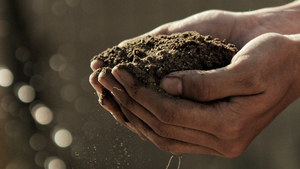
World Soil Day
Taking place on 5th December every year.
Highlighting the importance of soil and the need to use it sustainably.
About the event
First suggested by the International Union of Soil Scientists (IUSS) in 2002, this day is about acknowledging the overlooked, but essential role soil plays in our lives.
For the IUSS, World Soil Day ‘celebrates the importance of soil as a critical component of the natural system’, its vital contribution to ‘food, water and energy security’ and its role as a ‘mitigator of biodiversity loss and climate change’.
Understanding soil’s importance is an essential part of learning about how our world works, how we are fed and how climate change can be solved.
How to approach it
The goal of today is helping students to see (1) the remarkable importance of soil, (2) how we are losing it, and (3) how we must save it to combat climate change. The Great Big Lesson has a useful section as a primer on the importance of soil for our ecosystems and for climate action.
In order for almost anything to live on land, soil is as essential as air or water. Simply put, soil is a rich mix of finely broken down minerals and biological materials. This makes it the ideal medium through which plants and fungi can grow. It means that almost all terrestrial plants and animals rely on soil as the bedrock of survival. Good soil means healthy ecosystems, rich in life and food.
A good way to approach this is by asking students to imagine a deep jungle or a dense forest. Ask them to imagine all the trees, mushrooms and other plants growing there. Next, ask what these plants need to grow. Expect answers like sunlight, oxygen and water. Lead students to the idea that soil is also a key component. Show that soil is the thing which connects all of these plants through their roots into one functional whole. You could say how the first few metres of the Earth’s soil has more living things than the entire human population or that it stores more carbon than the entire atmosphere.
A healthy ecosystem (like a forest or wetland) builds soil over time through the accumulation of broken down biological materials. This process takes 400 years to produce new soil. Industrial agriculture and ploughing disrupt this system, eroding soil and letting it clog up rivers.Through this, show students that because soil is so important to storing carbon and healthy ecosystems we must conserve it. This can be done by new farming techniques that don’t plough and that use a diverse range of crops together that build soil health over time. If we do this, we can have ecosystems more resilient to climate change, resistant to drought and less likely to flood.
Organised by
United Nations

Conversation starter
Did you know that without soil we would have no food or plants? Healthy soil is vital for our survival and we have to look after it in order to look after ourselves. There are many ways to do this such as 'composting' or 'regenerative farming'. Do you know what these mean? See if you can find out!

